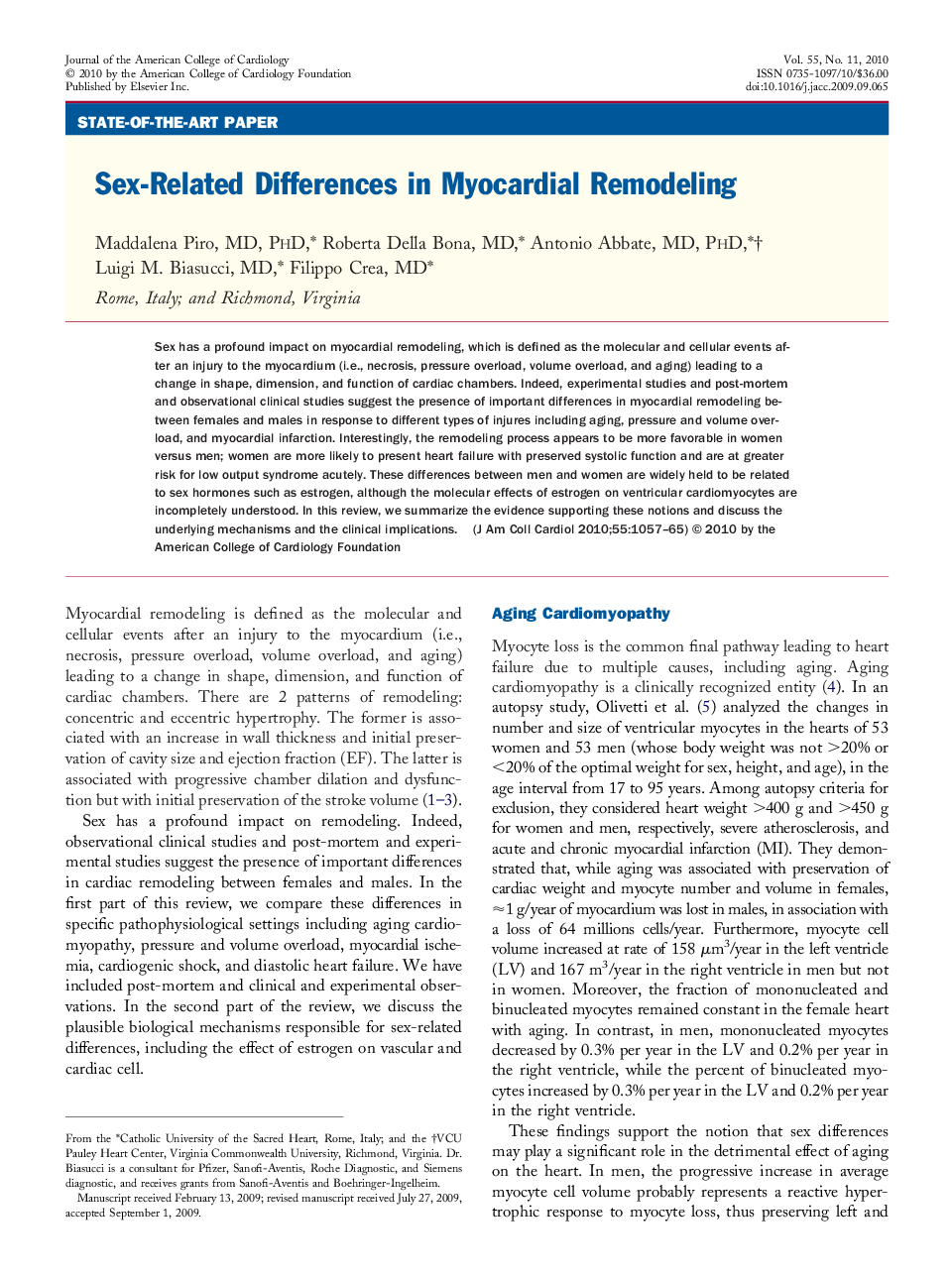| Article ID | Journal | Published Year | Pages | File Type |
|---|---|---|---|---|
| 2949510 | Journal of the American College of Cardiology | 2010 | 9 Pages |
Sex has a profound impact on myocardial remodeling, which is defined as the molecular and cellular events after an injury to the myocardium (i.e., necrosis, pressure overload, volume overload, and aging) leading to a change in shape, dimension, and function of cardiac chambers. Indeed, experimental studies and post-mortem and observational clinical studies suggest the presence of important differences in myocardial remodeling between females and males in response to different types of injures including aging, pressure and volume overload, and myocardial infarction. Interestingly, the remodeling process appears to be more favorable in women versus men; women are more likely to present heart failure with preserved systolic function and are at greater risk for low output syndrome acutely. These differences between men and women are widely held to be related to sex hormones such as estrogen, although the molecular effects of estrogen on ventricular cardiomyocytes are incompletely understood. In this review, we summarize the evidence supporting these notions and discuss the underlying mechanisms and the clinical implications.
